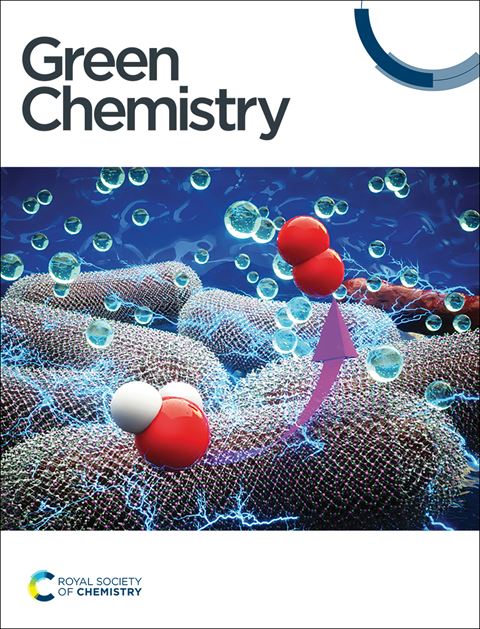Supramolecular assisted O-acylation of carbohydrates†
IF 9.3
1区 化学
Q1 CHEMISTRY, MULTIDISCIPLINARY
引用次数: 0
Abstract
The acylation of hydroxy groups serves as one of the most employed protecting group strategies in carbohydrate chemistry. Here, we present a base-free, supramolecular assisted approach for the O-acylation of carbohydrates under mild conditions, using 18-crown-6 in combination with a catalytic amount of potassium fluoride. This sustainable and useful method successfully converted various functional groups containing carbohydrate hydroxy groups into O-acyl, O-benzoyl, and O-propionyl derivatives with up to 99% yields.
碳水化合物的超分子辅助o -酰化
羟基的酰化是碳水化合物化学中最常用的保护基团策略之一。在这里,我们提出了一种在温和条件下无碱、超分子辅助的碳水化合物o -酰化方法,使用18-冠-6和催化量的氟化钾结合。该方法成功地将含有碳水化合物羟基的各种官能团转化为o -酰基、o -苯甲酰和o -丙酰衍生物,收率高达99%。
本文章由计算机程序翻译,如有差异,请以英文原文为准。
求助全文
约1分钟内获得全文
求助全文
来源期刊

Green Chemistry
化学-化学综合
CiteScore
16.10
自引率
7.10%
发文量
677
审稿时长
1.4 months
期刊介绍:
Green Chemistry is a journal that provides a unique forum for the publication of innovative research on the development of alternative green and sustainable technologies. The scope of Green Chemistry is based on the definition proposed by Anastas and Warner (Green Chemistry: Theory and Practice, P T Anastas and J C Warner, Oxford University Press, Oxford, 1998), which defines green chemistry as the utilisation of a set of principles that reduces or eliminates the use or generation of hazardous substances in the design, manufacture and application of chemical products. Green Chemistry aims to reduce the environmental impact of the chemical enterprise by developing a technology base that is inherently non-toxic to living things and the environment. The journal welcomes submissions on all aspects of research relating to this endeavor and publishes original and significant cutting-edge research that is likely to be of wide general appeal. For a work to be published, it must present a significant advance in green chemistry, including a comparison with existing methods and a demonstration of advantages over those methods.
 求助内容:
求助内容: 应助结果提醒方式:
应助结果提醒方式:


